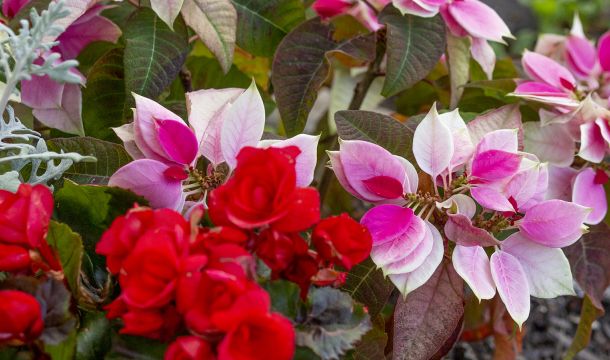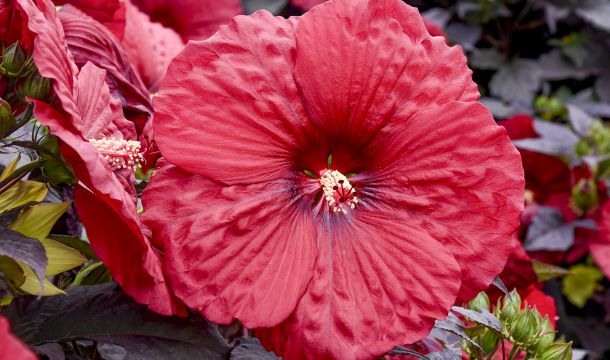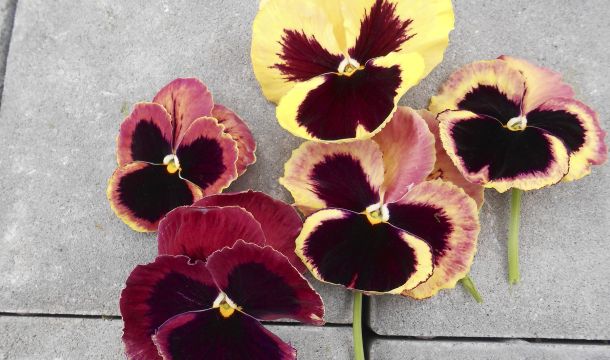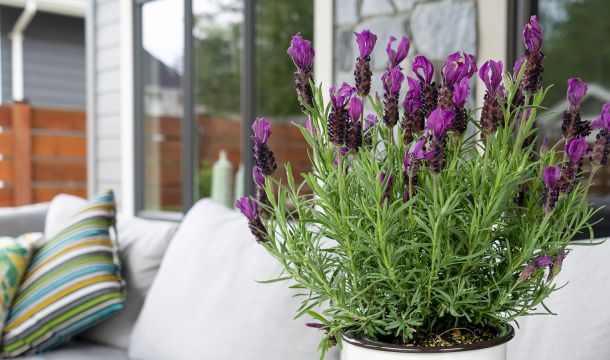Dappled Pansies—The Other Superlook
One of the roles pansies perform in the garden is to paint the home or business with color. They do this job well because they have bright flowers, thick coverage, frost tolerance, and a low cost. Pure, clear pansies combine all these factors into the most famous Pansy Superlook: the Beacon of Color. Every flower on every plant is consistently the same, a key factor in the success of this style. Deviations are squashed as reversions and swept out of the way as unwanted.
Dappled pansies take a weakness and turn it into a strength. If pure and clear solids give you the Beacon of Color, then dappling does the reverse. When a single plant puts up flowers of different colors or patterns, that’s a dappled pansy. Although modern breeding seeks to supress this urge, it’s really a part of the plant’s basic nature. Pansies don’t want a desk job, they want to go outside and play
Delta Classic Fire is probably the most famous cultivar within the Dappled Superlook. You can see the yellows and oranges flicker across the faces of these different blossoms. Fire is actually a style of Pansy found within Colossus, Cool Wave, FreeFall and several others.
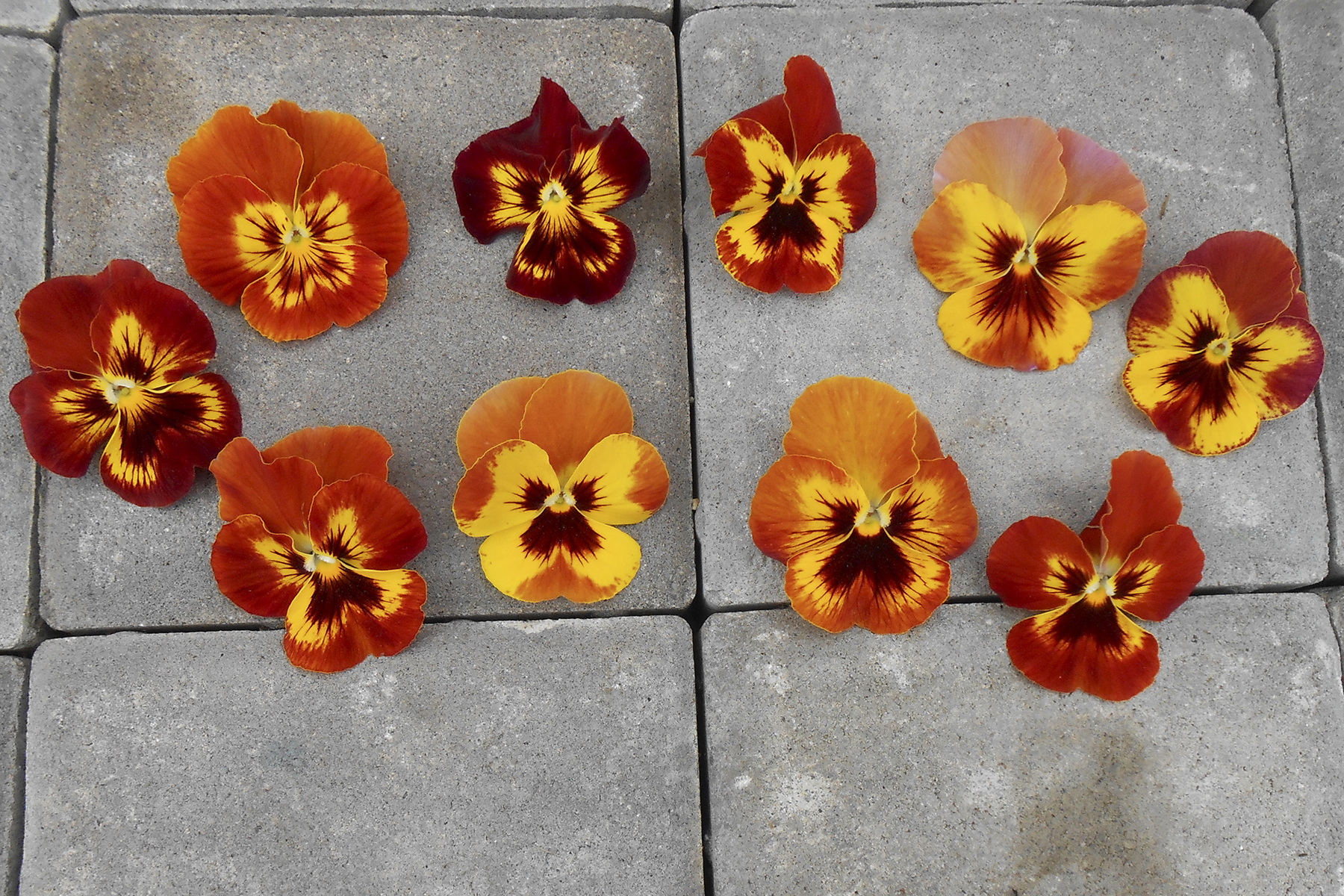
Different Styles of Dappling
Just as twilight is a mix of day and night, dappling is a mix of light and dark. Colors pulse from flower to flower and patterns morph, mimicking the dappled light underneath a light tree canopy—coincidentally the best place for a long-lasting pansy garden. Plants get full sun before the branches leaf out while the weather remains cool. As the leaves pop out, the garden below gets sun protection. Dappling in real life extends the lifespan of the pansy bed, so incorporating it as a design tool fits in with a holistic approach to gardening.
Various Fire and Swirl cultivars lean into this look. From a distance, flickers of alternating colors pepper the background canvas. Approach closely and you’ll find that no two blooms look the same, and they can be surprisingly different from one to another.
Streaking is another dappled style caused by bright whites blooming next to deep darks with all the colors mixing between them. It’s surprising how one plant can produce such different flowers. Take a look at Matrix Lavender Shades. When mass planted, those different speckled pansy faces create streaks of dark and light layered through the garden bed.
Some pansies stick to one color hue, varying the brightness or patterns on the faces. This is monochromatic dappling. You already know this look from popular seed mixes like Delta Buttered Popcorn Mix or Matrix Citrus Mix. In this case, the mix is stuffed inside the seed. Various Frosts come to mind as examples.
You can see the Dappling Superlook unfold with Cool Wave Strawberry Swirl. Left shows the variability of the flower within the cultivar · Center shows a closeup of the blooms in action above a basket · Right shows how the whole look comes together in a container.
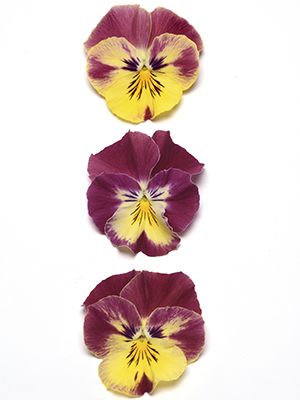 |
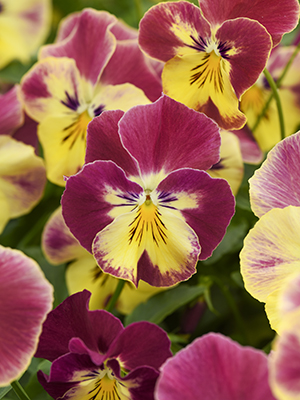 |
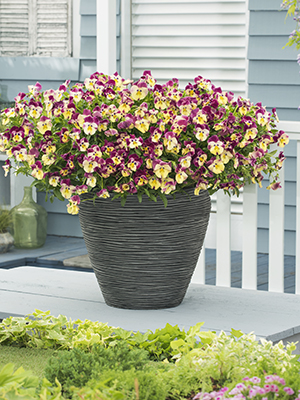 |
| Strawberry Swirl Examples | In Action | In Display |
Clearing the Clutter
A common complaint about pansies at the retail level is clutter. All the varieties look different, but they get treated the same in the confusion: cheap and disposable. Instead, deal with the problem by organizing pansies into three Superlooks: the Clear, the Face, and the Dappled. Adding the last category gives focus and purpose to all those cultivars that don’t fit into the first two groups. Sorting the choices in a simple way makes it easier for shoppers to see what they like and buy what they want. Clear pansies are color beacons. Faced ones are nostalgic. Dappled pansies are sophisticated (*cottagecore* if you want to go there).
Treat dappling as a strength, not a junk drawer. It‘s a refined look easy to offer because the seed creates the garden design. This flows right into the botanic lifestyle that brings people to garden centers, looking for living solutions to color their homes.
Draping a garden in the Dappled Superlook is a simple matter of mass planting one of the dappled pansies—sticking with just one variety. The garden design unfolds from within the plants themselves. This technique also works in bowls and baskets because the color concentrates at the top in enough mass to be visually distinctive.
Shade varieties usually offer a softer mix of colors, but not always. Delta Classic 'Pink Shades' is a good example of subtle changes within the Dappled Superlook.
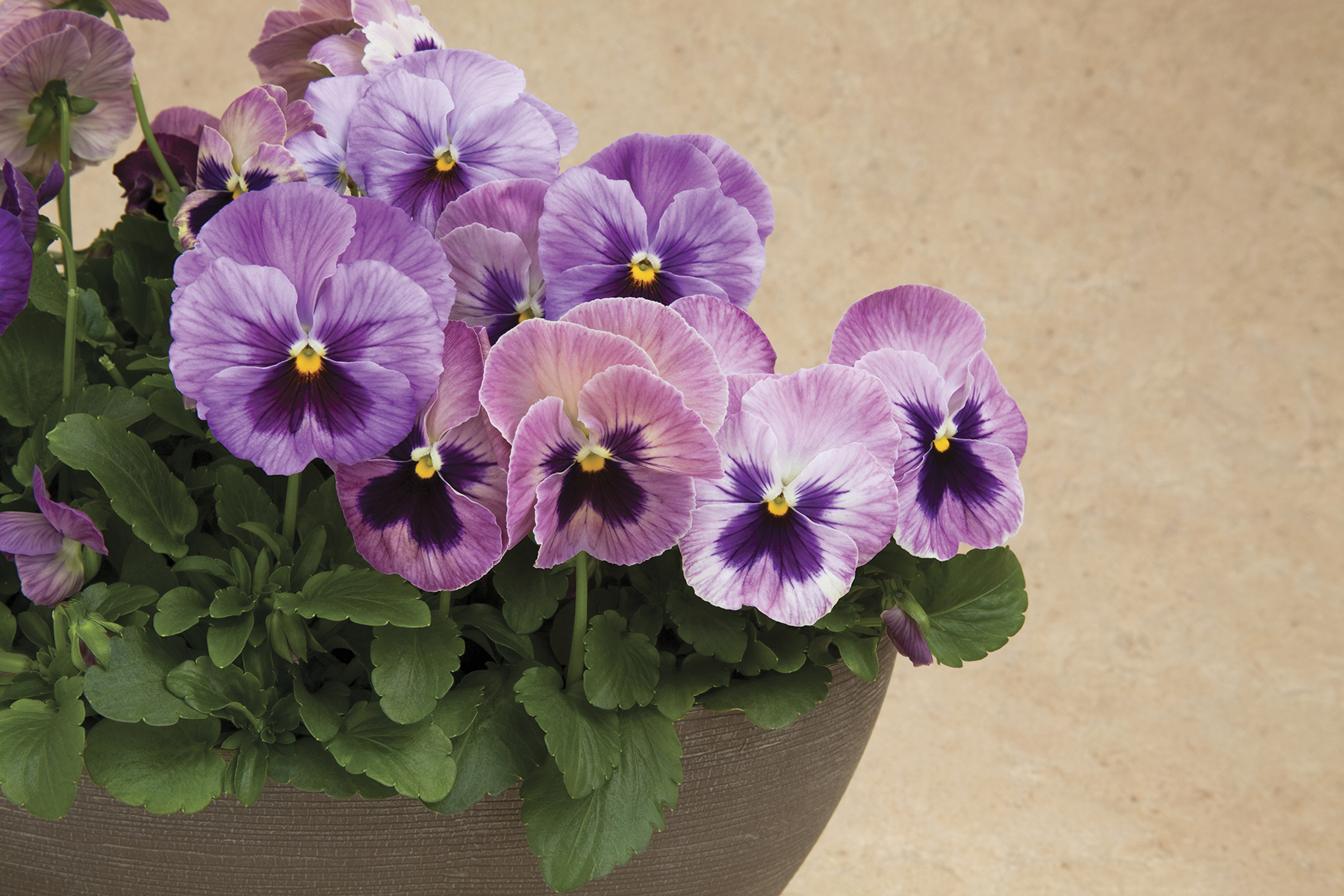
Pinging Dappled Pansies
As you can see, the joyfulness in the Dappled Superlook comes from the pansy’s willingness to explode into all sorts of color mixes and styles. Names often hint at the magic inside, like Fire, Swirl, Frost, and Shade, but not always. Sometimes, a variety just surprises you.
Below is a list of cultivars I’ve noticed over the years, along with some notes to describe their defining features:
Fire from Colossus, Cool Wave, Delta, Freefall, Inspire, Majestic, and Panola. Easily the best defined and most widely available of all the dappled cultivars.
Frost from Cool Wave and Delta Speedy. The Nature series also has an unusual Frosty Rose variety but it’s rare. If you find it, catch it.
Swirl from Cool Wave and Frizzle Sizzle. These series really lean into the dappled look. I am particularly fond of Strawberry Swirl with its stiff stems and tabletop style of spreading.
Clash of Tones: Two cultivars zag with an alternative viewpoint, contrasting cool and warm tones. Cool Wave Violet Wing has cool lavender shades over warm yellow cheeks with kitten whiskers. Matrix Midnight Glow has a small pale yellow face that pulsates over a field of nearly black.
Faces That Come and Go: Matrix Rose Blotch puts heavy beards on some flowers, but it goes clean-shaven on others. Meanwhile, the background color rotates from light pink to dark burgundy but mostly hangs among the roses. Delta Pink Shades is the most playful in this aspect, with beards, mustaches, and kitten whiskers scattered among whites, lavenders, and purples.
Delta Pro 'Lavender Blue Shades' dapples very differently. The whole background of the flower strobes from light to dark while remaining one color. The beard lightens and darkens in response, but never goes away.
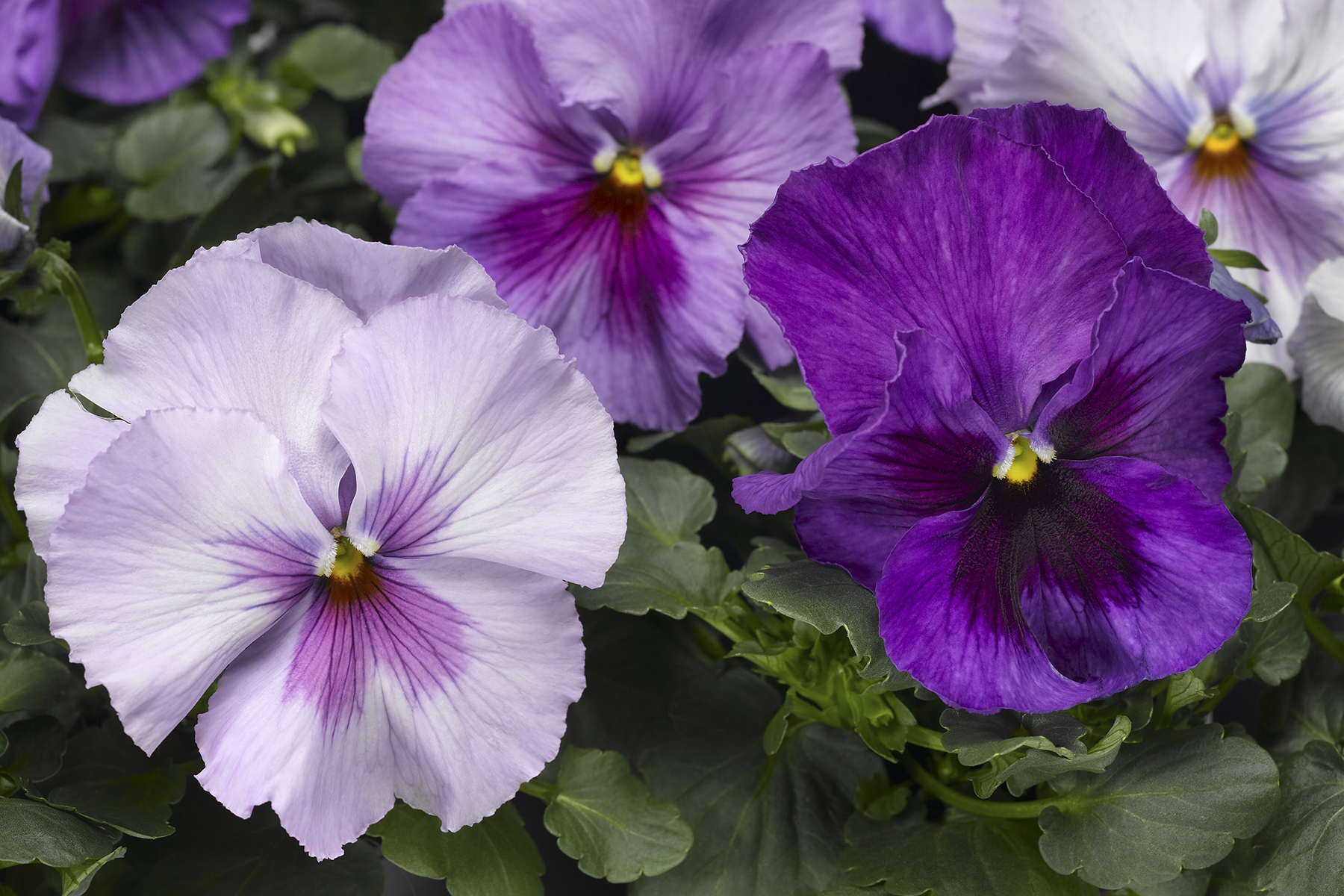
Shade happens to be the most common industry term to reflect the dappling effect inside a seed. It usually follows monochrome hues, but not always. I want to give a shout-out to the Inspire series with four different Shade hues along with Fire Surprise. Here are some other Shade varieties:
- Colossus Lemon Shades
- Delta Pink Shades or Lavender Blue Shades
- Freefall Blue Picotee Shades
- Grandio Lavender Shades
- Imperial Antique Shades
- Inspire Lavender Blotch Shades, Lilac Shades, Peach Shades, or Pink Shades
- Majestic Giants II Marina Shades with Blotch
- Matrix Lavender Shades, Pink Shades
- Nature Antique Shades
- Panola Lilac Shades, Pink Shades
Here are three more styles of dapping. Matrix 'Blue Wing' has a consistent face, but the hair color over the top with brighten and darken. Matrix 'Lavender Shades' has extreme ranges between bright and dark flowers. Matrix 'Midnight Glow' has a nearly black background in which the small yellow face pulsates.
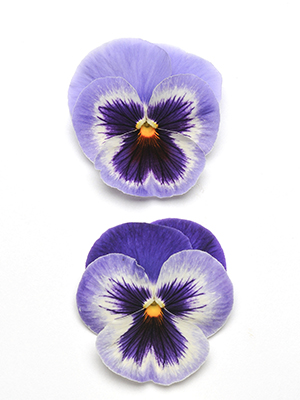 |
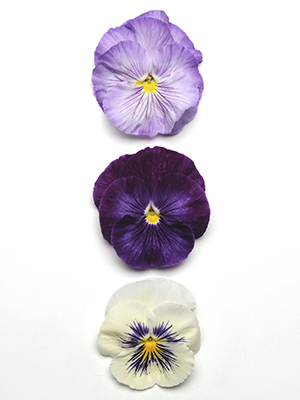 |
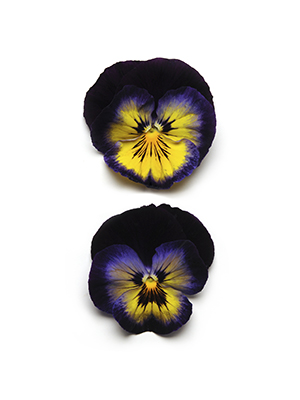 |
| Matrix 'Blue Wing' | Matrix 'Lavender Shades' | Matrix 'Midnight Glow' |
Some varieties have a straight name, but they do give a little bit of a clue to the magic within as they grow out:
- Cool Wave Violet Wing: dark lavender over deep yellow with kitten whiskers
- Delta Premium Yellow with Purple Wing: creamy yellow face surrounded by purple—or not
- Matrix Blue Wing: purple-to-lavender trim over white faces with thick, bushy beards
- Matrix Midnight Blue: tight bursts of yellow surrounded by very dark trim
- Matrix Rose Blotch: pink-to-burgundy but usually rose; sometimes the blotch appears, sometimes it doesn’t
With Matrix 'Rose with Blotch', the color hangs around the roses, but wanders into lighter and darker tones. Sometimes the blotch is there, sometimes it isn't.
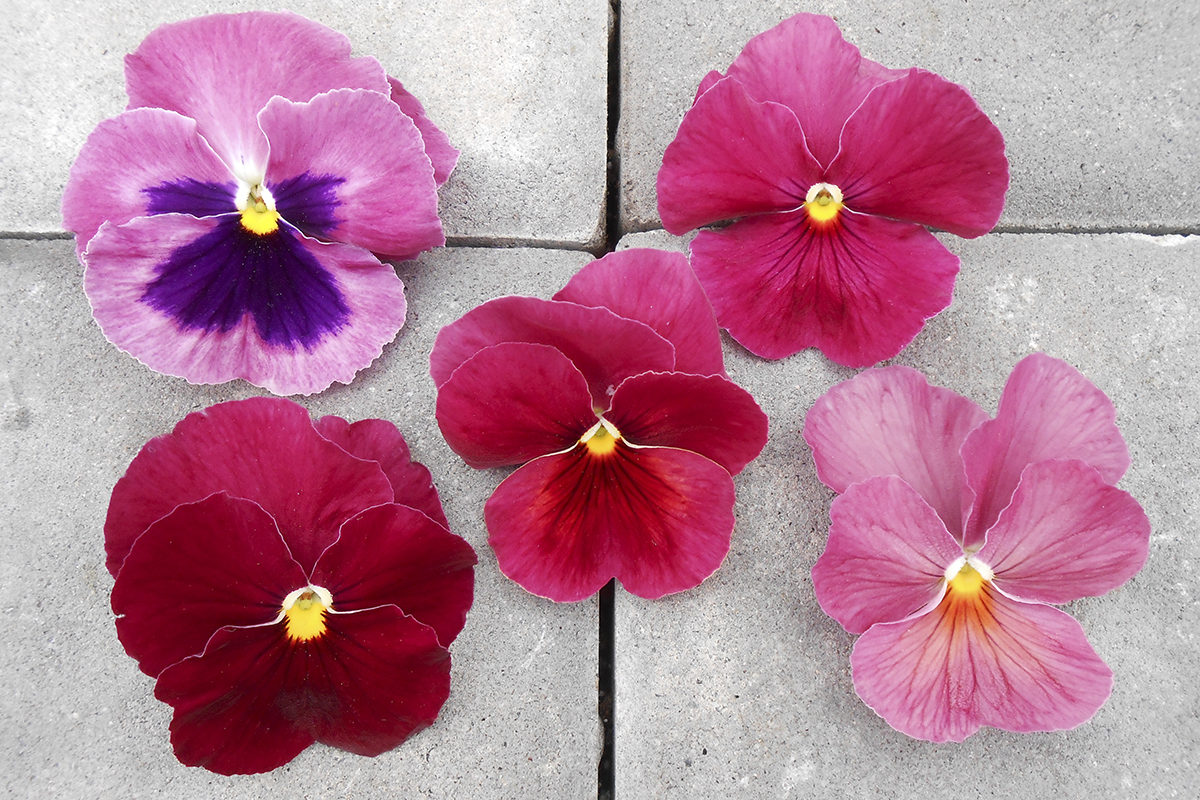
Popular Articles

Trialing Edible Baskets

The Arthouse Expansion of Agastaches
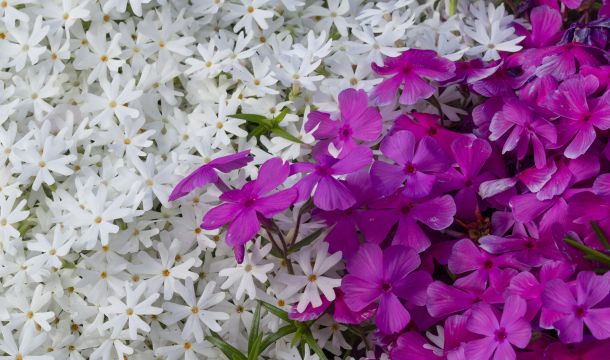
The Strengths Behind Phlox Subulata
